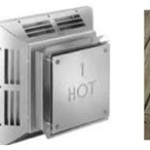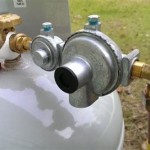Outdoor Fireplace with Chimney: A Comprehensive Guide
An outdoor fireplace with a chimney offers a unique blend of warmth, ambiance, and aesthetic appeal to any outdoor living space. It transforms a patio, deck, or backyard into a cozy gathering spot, extending the usability of these areas well into the cooler seasons. The presence of a chimney is crucial for the proper function of the fireplace, ensuring efficient smoke removal and safe operation. Understanding the various aspects of outdoor fireplaces with chimneys, from design considerations to construction details and maintenance, is essential for homeowners considering this valuable addition.
Outdoor fireplaces are not merely functional; they are also significant design elements that can enhance the overall architectural style of a home. The choice of materials, the dimensions of the fireplace, and the style of the chimney all contribute to the visual impact and the overall impression the fireplace creates. Careful planning and execution are necessary to ensure the fireplace is both aesthetically pleasing and performs optimally.
Beyond the immediate benefits of warmth and aesthetics, an outdoor fireplace with a chimney can also increase property value. It is an attractive feature for potential buyers, signaling a well-maintained and thoughtfully designed outdoor living space. This makes the investment in an outdoor fireplace not only a personal enjoyment but also a potentially valuable asset for the future.
Design Considerations for Outdoor Fireplaces with Chimneys
The design phase of an outdoor fireplace with a chimney is paramount. It involves numerous considerations, from the intended use of the fireplace to the overall aesthetic goals. The first step is to determine the optimal location for the fireplace. Factors such as proximity to the house, prevailing wind direction, available space, and existing landscaping all play a role in this decision.
The size of the fireplace should be proportionate to the size of the outdoor space. A fireplace that is too large can overwhelm a small patio, while a fireplace that is too small may not provide sufficient warmth or visual impact in a larger backyard. A balance must be struck to ensure the fireplace complements the surrounding environment.
The choice of materials is another critical design consideration. Common materials include brick, stone, concrete, and stucco. Each material offers different aesthetic qualities, durability characteristics, and cost implications. Brick and stone provide a classic, rustic look, while concrete and stucco offer a more modern, streamlined appearance. The chosen materials should complement the existing architecture of the home, creating a cohesive and harmonious design.
The design of the chimney is equally important. The height of the chimney must be adequate to ensure proper drafting, preventing smoke from blowing back into the seating area. The design of the chimney cap is also significant, as it protects the chimney from rain, snow, and debris. Decorative chimney caps can also add a touch of elegance and personality to the fireplace.
Finally, the design should consider the integration of the fireplace with the surrounding landscape. Incorporating features such as built-in seating, planters, and outdoor lighting can enhance the overall ambiance of the outdoor space, creating a welcoming and functional environment.
Construction Details and Regulations
The construction of an outdoor fireplace with a chimney is a complex process that requires careful attention to detail and adherence to building codes. It is generally advisable to hire a qualified contractor with experience in fireplace construction to ensure the project is completed safely and correctly.
The foundation is the most critical component of the fireplace. It must be strong and stable enough to support the weight of the fireplace and chimney. A concrete slab is typically used as the foundation, and it should be properly reinforced with steel rebar to prevent cracking. The foundation must also extend below the frost line to prevent movement caused by freezing and thawing temperatures.
The firebox is the heart of the fireplace, where the fire burns. It should be constructed of fire-resistant materials, such as firebrick, to withstand the high temperatures. The dimensions of the firebox should be appropriate for the size of the fireplace and the intended use. A well-designed firebox will promote efficient combustion and minimize smoke production.
The chimney is responsible for venting the smoke and gases produced by the fire. It must be properly sized and constructed to ensure adequate drafting. The chimney should be lined with a flue liner, which protects the chimney from the corrosive effects of the smoke and gases. The flue liner can be made of clay tile, stainless steel, or cast-in-place concrete.
Building codes vary depending on the location, but they typically address issues such as fire safety, structural integrity, and environmental protection. It is essential to obtain the necessary permits before beginning construction and to ensure that the fireplace complies with all applicable codes. Failure to comply with building codes can result in fines, delays, and even the need to dismantle the fireplace.
Proper ventilation is crucial for a safe and efficient outdoor fireplace. Building codes often specify minimum clearances between the fireplace and combustible materials, such as wood framing and siding. These clearances are designed to prevent fires and ensure the safety of the occupants.
Maintenance and Safety Tips
Regular maintenance is essential for ensuring the safe and efficient operation of an outdoor fireplace with a chimney. Neglecting maintenance can lead to problems such as chimney fires, smoke backdrafts, and structural damage.
Chimney sweeping is the most important maintenance task. Creosote, a flammable substance that builds up in the chimney as a result of burning wood, can cause chimney fires. The National Fire Protection Association (NFPA) recommends that chimneys be inspected and cleaned at least once a year, or more frequently if the fireplace is used regularly.
The firebox should also be inspected regularly for cracks or damage. Cracks can allow hot embers to escape, posing a fire hazard. Damaged firebrick should be replaced promptly. Mortar joints between the bricks or stones should also be inspected and repaired as needed.
The chimney cap should be checked to ensure it is in good condition and free of debris. A damaged or clogged chimney cap can restrict airflow, causing smoke to backdraft into the seating area. The area around the fireplace should be kept clear of combustible materials, such as dry leaves, wood piles, and furniture.
When using the fireplace, always use seasoned firewood. Seasoned firewood burns cleaner and produces less smoke than green firewood. Never burn trash, paper, or other materials in the fireplace, as these can release harmful pollutants into the air and damage the chimney.
Never leave a fire unattended. Keep a fire extinguisher or a garden hose nearby in case of an emergency. Ensure that all embers are completely extinguished before leaving the area. Consider using a screen or spark arrestor to prevent sparks from escaping the firebox, reducing the risk of wildfires and injuries.
It is important to educate all family members and guests about fire safety. Ensure that everyone knows how to safely operate the fireplace and what to do in case of a fire. Post fire safety rules near the fireplace for easy reference.
Regular inspections by a qualified chimney sweep can identify potential problems before they become serious and costly. A chimney sweep can also provide advice on proper fireplace usage and maintenance.
Following these maintenance and safety tips will help ensure that an outdoor fireplace with a chimney provides years of enjoyment and warmth, while also protecting the safety of the home and its occupants. The key is to be proactive and diligent in addressing any potential issues before they escalate into larger, more dangerous problems.

Outdoor Fireplaces The Fireplace Company Inc

Outdoor Fireplaces Round Grove S

Outdoor Fireplace Kits Stonewood S Cape Cod Ma Nh Ct

Building An Outdoor Fireplace With Tips From A Professional Mason

Diy Outdoor Fireplace Ideas

Outdoor Fireplace Kits Masonry Stone

Beech Tree Materials Stone Outdoor Fireplaces

Outdoor Stone Paver Firepits Fireplaces Installer Minneapolis St Paul

How To Build An Outdoor Fireplace Step By Guide Buildwithroman

Bentley Fireplace Project
Related Posts








